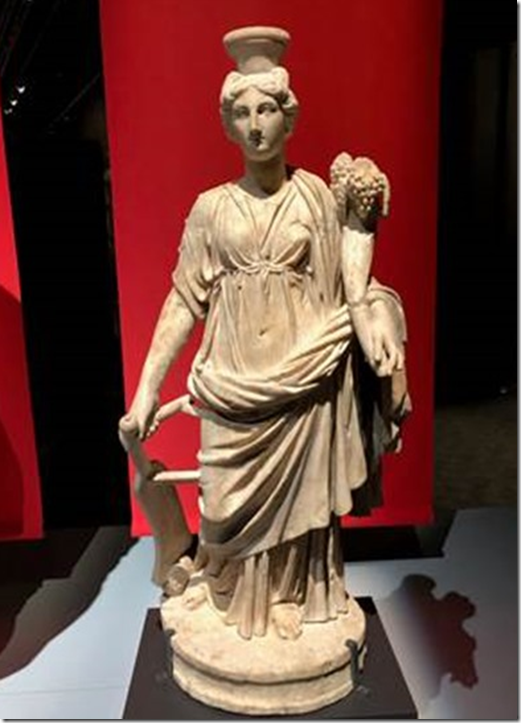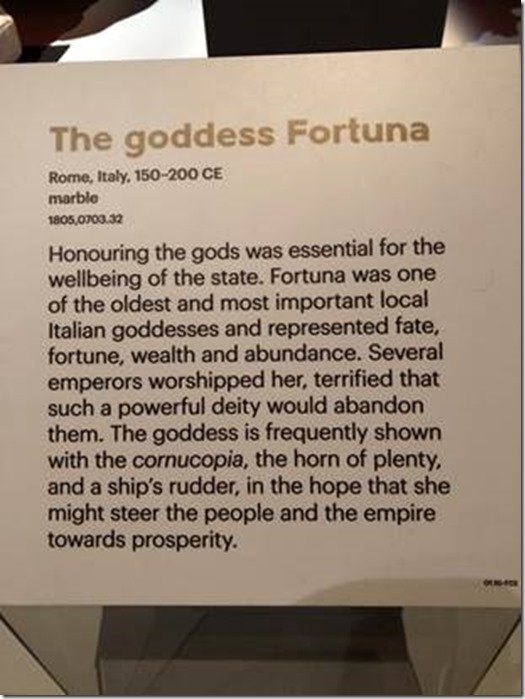Originally posted on June 8, 2020 @ 7:34 AM
‘A picture is worth a thousand words’
‘Seeing is believing’
These are common aphorisms about photographic media and images. Unfortunately, these aphorisms have never been true. No image is objective or neutral but rather carries a story that must be interpreted.
Now, more than ever with applications and devices that can manipulate images, we need to be more aware about what we think images do and the nature of photographic evidence.
I have written before about naivety about evidence (https://safetyrisk.net/evidence-proof-and-paperwork-in-safety/) and the nature of proof. Despite the reality that the safety industry trains people about regulation, legislation, standards and systems, it doesn’t help safety people understand the subjectivity of evidence. This is often discovered the hard way when a safety person for some reason or other ends up in court. The court and lawyers don’t think about evidence as most safety people do.
So too, when it comes to images or paperwork in themselves they do not comprise objective ‘facts’ or neutral ‘evidence’. Indeed, often the paperwork that is trusted by the industry as a protection is used against you in court.
Images and documents require interpretation and testimony to verify their authenticity, validity and accuracy to a court. Now that images can be so easily manipulated and ‘doctored’ with Photoshop (or Picasa), we need to be much more aware of how images that we might trust can be challenged. Similarly for the volumes of paperwork we think are a defence.
One of the indicators of naivety in the safety industry over time has been the constant parading of photographs of people doing crazy things. The photos are often used to create a climate of superiority for the industry so it can parade its superiority about risk in the face of unsafe behavior. These photos are often paraded about as ‘shocker of the week’ or ‘idiots at risk’ or similar posts. Many of these are clearly ‘Photoshopped’ and bury the industry in an unhelpful climate of pointing and safety arrogance. The more these are paraded the dumber it makes the industry.
Digital cameras are everywhere and even the simplest of cameras and a phone can allow editing in the phone/camera even before it gets to Photoshop. Even then, photographers have known for years how to change the emotion of a photographic image through Depth of Field, shutter speed, aperture setting and angle/point of view. Photography has been a hobby for over 50 years and I can do all of these things but I am certainly no professional. Photography helps one to see the world semiotically.
When a professional Photoshop graphic expert takes to an image it is nearly impossible to detect its manipulation, even to another expert (https://www.semanticscholar.org/paper/DIGITAL-MANIPULATION-AND-PHOTOGRAPHIC-EVIDENCE%3A-THE-Parry/60feb88e68e053ae90fc1db2142b56a504276b85;).
Unfortunately, people in general are naïve about digitally enhanced images and photos. Similarly in Safety, understanding Real Risk and developing discernment seems in short supply (https://www.humandymensions.com/product/real-risk/).
The prevalence of Instagram and other social media image platforms demonstrate that people tend to believe the story if the picture matches an attribution. Rather than question the veracity of the story, if the image matches the story then we tend to believe its true. We see this kind of thing done all the time in museums and art galleries. We see an image and then underneath is an explanation given by someone. For example: I went to an Exhibition recently and the two photos below demonstrate the way we make associations and then attributions about images.
Fortuna
Explanation of Fortuna
I took these 2 photos but you have to accept my testimony on that. The little statue was part of a travelling exhibition called Rome, City and Empire (https://www.nma.gov.au/exhibitions/rome-city-and-empire ). But these two comments still don’t make my story true. You still have no evidence that I was there or took the two photos other than my corroborating testimony.
Then when we come to the photos themselves you also need my testimony to accept that the explanation and photo were situated together. Even if true, we still need to trust the explanation given by the comments underneath the statue as a true representation of the statue. We then need to trust the testimony of the museum employee, historian or curator and then attribute the connection. The statue may not be of Fortuna and it certainly is dislocated from its context so there is rather a lot of trust and faith placed in the testimony thus far.
This is how all images are ‘used’. In semiotics the study of subjectivity and interpretation is called ‘hermeneutics’. The beginning of wisdom in risk is accepting rather than fearing its subjectivity.
Even in the courts we know that effective storytelling and skills in narrative connected to evidence can sway a magistrate or jury (Amsterdam, A., and Bruner, J., (2000) Minding the Law, How courts rely in storytelling, and how their stories change the ways we understand the law – and ourselves. Harvard University Press, London; Bruner, J., (2002) Making Stories, Law, Literature Life. Harvard University Press, London).
Whether it be paperwork or images the problem is not in the image but rather in the fallibility of humans as witnesses, lawyers, magistrates and juries. Neither the courts nor the Law are stupid enough to believe in zero!
Often testimony is required years after people were present on the scene. Sometimes stories are then embellished or change over time. It is up to the court to decide what testimony or evidence is valid.
I have already demonstrated how commentary attributed to images can be easily manipulated and distorted (https://safetyrisk.net/lemmings-for-lemmings-in-leadership-and-risk/ ). The story of the Dancing Guy at a folk festival has been misused by leadership speakers for 10 years. The TED Talk video has had 14 million views and it’s all false! Similarly we saw a president this week pose for a photo in front of a church he never attends holding a book he doesn’t read (https://www.ft.com/content/f0623663-34b5-46fc-981b-8765a44076ed ). But he knows just how gullible and lacking in discernment the general public are, such is the misattributions and naivety about images. This is now known as ‘Fauxtography’ or ‘Hyper-realism’.
We do know that any form of proposed evidence (and photos), are challenged in court. If an image or some paperwork can’t stand up to cross examination it doesn’t last long. Often a lawyer will advise their client NOT to submit some pieces of paperwork or images because they know how the court will treat them unfavourably eg. a risk matrix (https://vimeo.com/162034157 ). Greg Smith nominates this coloured tool (that is trusted so much in the safety industry) as his ‘go to’ for discrediting a risk assessment in court.
You can hear Greg and I in conversation about Risky Conversations here:
https://spor.com.au/podcasts/risky-conversations-talking-book/
You can watch the Risky Conversations videos here: https://vimeo.com/showcase/3938199
So, where does this leave Safety? Some things to consider:
- We should not be so naïve about paperwork and images in which we trust. Perhaps read Papersafe by Greg Smith as a start (https://www.waylandlegal.com.au/post/paper-safe )
- We should always keep a journal or daily diary that describes in brief detail our experiences for the day. These may become key triggers for memory should anything go pear shaped.
- We need to develop critical thinking skills about documentation, evidence and images and be more wary of attributions and narrative connected to such images.
- Unfortunately, it is outside of the safety curriculum that one will find critical thinking, the safety curriculum only empowers checklisting. A study of History, Politics, Law, Literature, Anthropology or Semiotics is needed to help shape critical thinking. It is only in a transdisciplinary approach that one can step outside of the safety bubble and the limitations of the AIHS BoK.
- Do some research on how images are currently being challenged in court (https://criminalcpd.net.au/wp-content/uploads/2018/06/Identification-Evidence-March-2018-Edition-Mark-Dennis.pdf)
- Stop seeing the world as some kind of objective platform, step outside of the STEM-only bubble and start to question the biases and subjectivities of science (eg. https://www.lri.fr/~mbl/Stanford/CS477/papers/Kuhn-SSR-2ndEd.pdf) Similarly, the delusions that paperwork are objective.
- Spend some time exploring the challenges of perception and vision, especially collective attribution and social psychological dynamics that shape vision (http://www.austlii.edu.au/au/journals/ALRCRefJl/2007/32.pdf). This is the nature of my ninth book in the series on risk to be released later this year.
- Perhaps start your journey away from naivety by studying an Introduction to the Social Psychology of Risk. A free module is currently being run but another will be available in 12 weeks time. (https://cllr.com.au/product/an-introduction-to-the-social-psychology-of-risk-unit-1-free-online-module/ )
- Start to think of paperwork and photos more as artefacts. Artefacts are a critical part of a study of Culture that is ignored by the bahaviourist focused safety industry. ‘No object is objective’ is a good mantra to have in the front of your journal or another good aphorism is ‘everything has significance’.
- Perhaps take up the hobby of photography there is so much free on the internet (https://phlearn.com/magazine/best-photography-blogs/). An important lesson is: just as the brain is not a computer so too are the eyes not like a camera.
One blog I have found helpful in photography and in thinking about evidence is https://thelawtog.com/blogs/. Although American there are some good tips for thinking about photography and law.
Of course, when taking photos always seek permission and if needed get that permission release in writing especially if undertaking an investigation. We cover all of this in our SEEK Module (https://cllr.com.au/product/seek-the-social-psyvhology-of-event-investigations-unit-2/ ) on investigations.





Frank Garrett says
Some of us amateur photographers lived the transition from 35mm film to digital, when that took place there was much excitement and discussion around digital pictures as “evidence” in court, but the technology just wasn’t there to manipulate images as there is today. Now there is the ability to manipulate video as seen in any social media post. A long winded way to agree whole heartily with your blog Rob, but there must be no room for interpretation, photos are black & white, figuratively and literally says safety.
rob long says
Spot on Frank. But even without a device like a camera, it has always been easy to con the non-discerning into believing a host of snake oil through the binary black and white of fundamentalist safety. What a shock it is when the court gets it so wrong.
Brian Darlington says
Great Blog Rob, very interesting
Regards
Brian
bernardcorden says
Industrial manslaughter charges are pending and a simplified version will be presented at the forthcoming virtual National Safety Conference.
Early bird booking discounts are still available.
bernardcorden says
PS: I forgot the post nominals Jack (ChOHSP)
Rob long says
The more letters the more professional. Fauxtography indeed.
bernardcorden says
https://www.youtube.com/watch?v=WZ6SrhhFYk0
The following sounds like an ICAM investigation or TapRoot RCA
This is the horse and the hound and the horn,
That belonged to the farmer sowing his corn,
That kept the that crowed in the morn,
That woke the priest all shaven and shorn,
That married the man all tattered and torn,
That kissed the maiden all forlorn,
That milked the cow with the crumpled horn,
That tossed the dog that worried the cat,
That chased the rat that ate the malt,
That lay in the house that Jack built.
http://www.tmponline.org/wp-content/the_real_truth_sun.jpg
Admin says
That is hilarious! So the Farmer that sowed the corn requires more training and Jack to take more care in regards to storing his malt……….